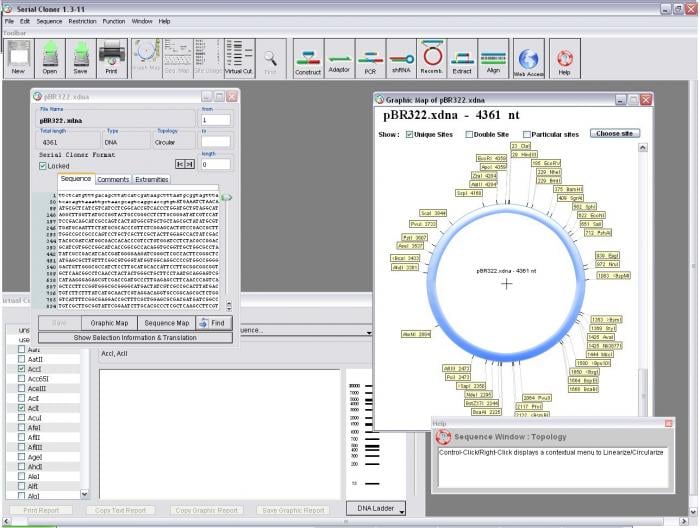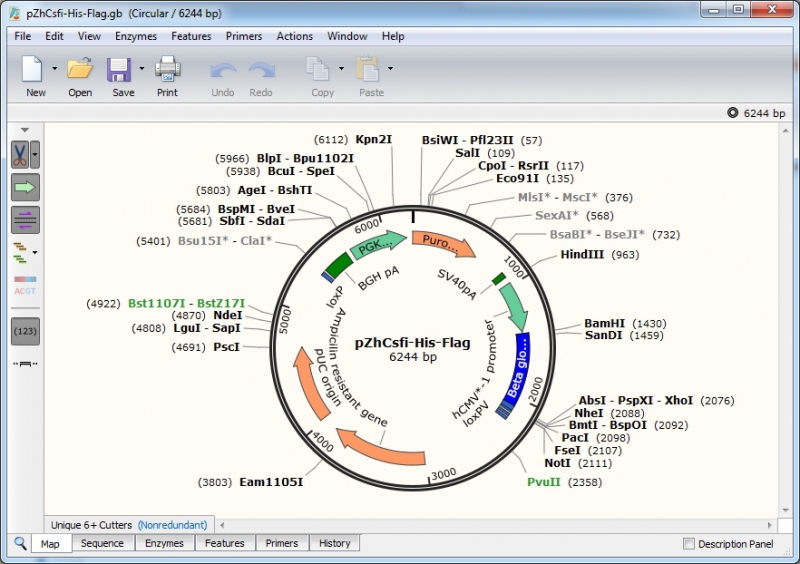

In humans, the GAPDH gene is highly expressed in 21 different types of cancer and may be associated with neuronal diseases such as Alzheimer's and Huntington's ( Sirover, 1999 Altenberg and Greulich, 2004 Kim and Dang, 2005 ). As one of the most abundant enzymes in cells, GAPDH has served as a model protein for biochemists studying structure–function relationships, enzyme action, and metabolic pathways ( Sirover, 1999 ). The GAPDH enzyme catalyzes an important step in glycolysis and thus it occurs in all living organisms ( Figge et al., 1999 ). To address the need for more data from nonmodel species, we developed a 6- to 8-wk laboratory exercise geared toward undergraduates that entails the cloning, sequencing, and bioinformatics analysis of the housekeeping gene glyceraldehyde-3-phosphate dehydrogenase (GAPDH) from a variety of plants. Now that most model species have had their genomes sequenced, there is growing interest in examining the genes of lesser-studied organisms as well ( Blaxter, 2002 ). In the past, many of the accessions published in GenBank were sequences from model organisms, such as yeast, fruit fly, mouse, and the plant Arabidopsis. Researchers use it to learn more about the identity, homology, structure, and variability of specific genes and gene products, as well as to explore gene function, gene expression, genome organization, and evolution. Reasons for accessing the GenBank database are as varied as the information stored there ( Ostell, 2005 Sayers et al., 2009 ). The explosive growth in the number of nucleic acid sequences published in GenBank has made it the centerpiece for researchers worldwide. In 2005, Ostell reported that the NCBI website ( was visited by researchers throughout the world 50 million times per day, including 400,000 different homology searches. More than 103 million individual DNA/RNA sequences from >300,000 genera are currently available in this free, online database ( Benson et al., 2009 NCBI, 2009 ). GenBank is a comprehensive public database of annotated nucleotide sequences maintained by the National Center for Biotechnology Information (NCBI Bethesda, MD). Student confidence with basic laboratory techniques and knowledge of bioinformatics tools were significantly increased upon completion of this hands-on exercise. Student achievement was evaluated using pre-, mid-, and final-test assessments, as well as with a survey to assess student perceptions. This 6- to 8-wk project-based exercise focuses on a pivotal gene of glycolysis (glyceraldehyde-3-phosphate dehydrogenase), in which students isolate, sequence, and characterize the gene from a plant species or cultivar not yet published in GenBank. To meet these challenges, we have partnered with Bio-Rad Laboratories in the development of the “Cloning and Sequencing Explorer Series,” which combines wet-lab experiences (e.g., DNA extraction, polymerase chain reaction, ligation, transformation, and restriction digestion) with bioinformatics analysis (e.g., evaluation of DNA sequence quality, sequence editing, Basic Local Alignment Search Tool searches, contig construction, intron identification, and six-frame translation) to produce a sequence publishable in the National Center for Biotechnology Information GenBank. Two common topics covered in biotechnology or molecular biology courses are gene-cloning and bioinformatics, but to provide students with a continuous laboratory-based research experience in these techniques is difficult.

With rapid advances in biotechnology and molecular biology, instructors are challenged to not only provide undergraduate students with hands-on experiences in these disciplines but also to engage them in the “real-world” scientific process.


 0 kommentar(er)
0 kommentar(er)
